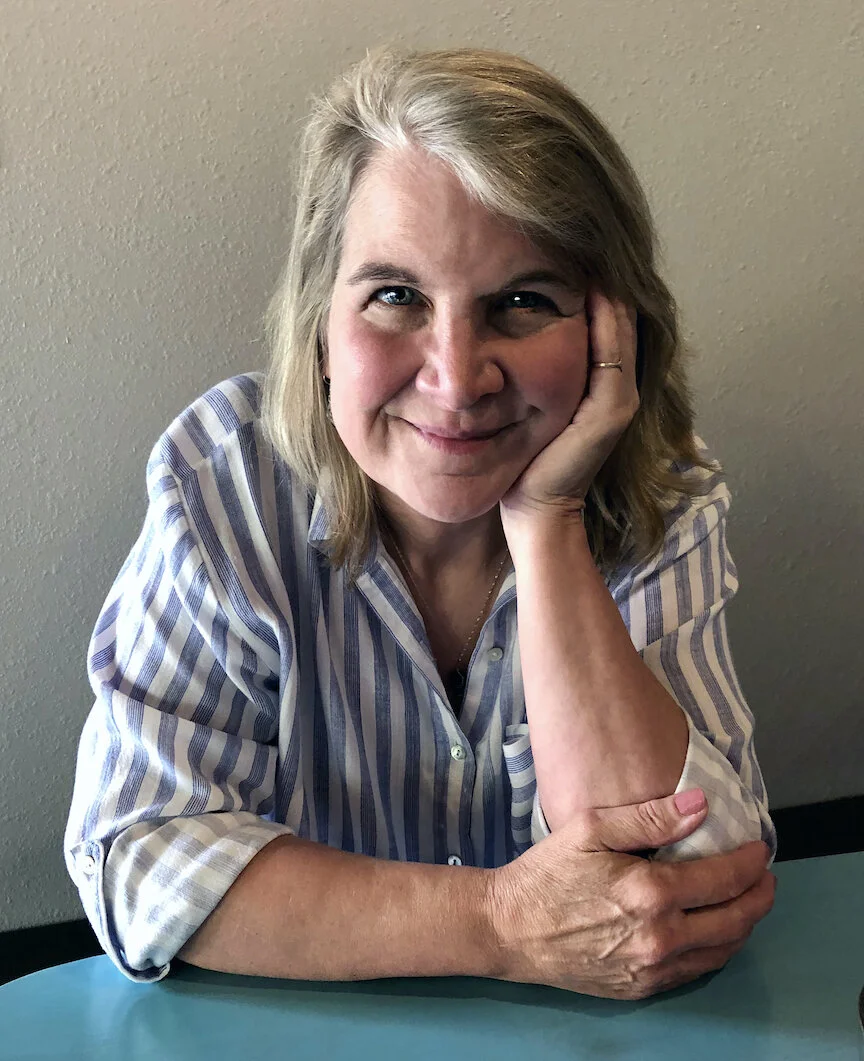Interview with artist Guy Bell
Guy Bell discovered his love for creating art, and gave in to it, only after trying to exist in ‘the normal’ 9-5 world. He is a painter, sculptor, and muralist who has experienced the art world from both sides – as a creator and as a broker. Now, as Artist-in-Residence for the Paul Michael Company, he has the freedom to create the wonderful and expansive works he has become known for. Guy’s works can be found at his website guywbell.com and on his Instagram.
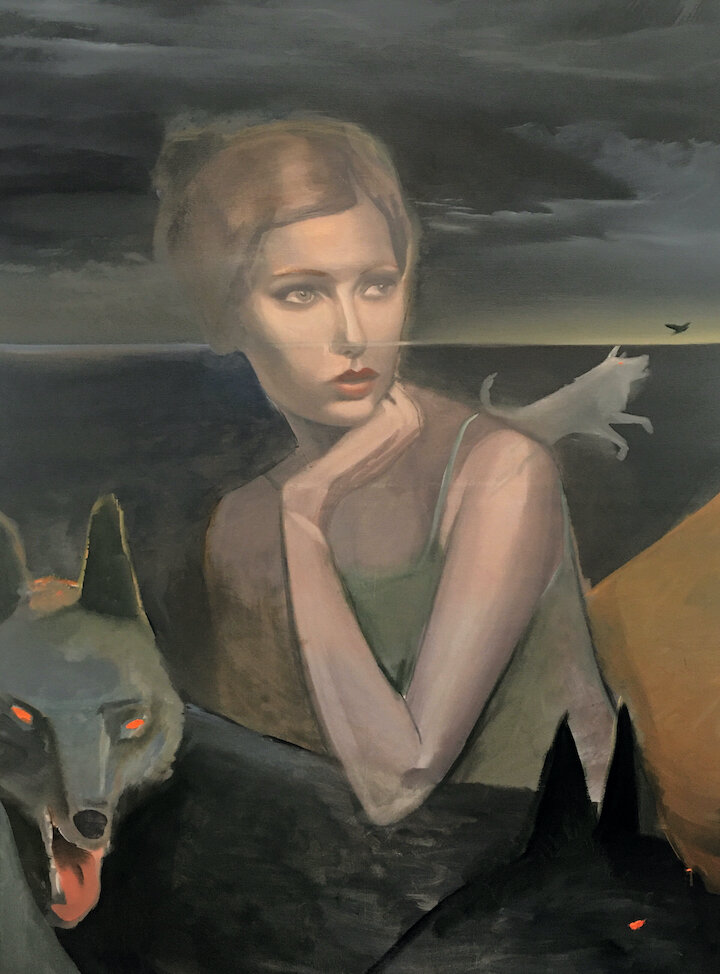
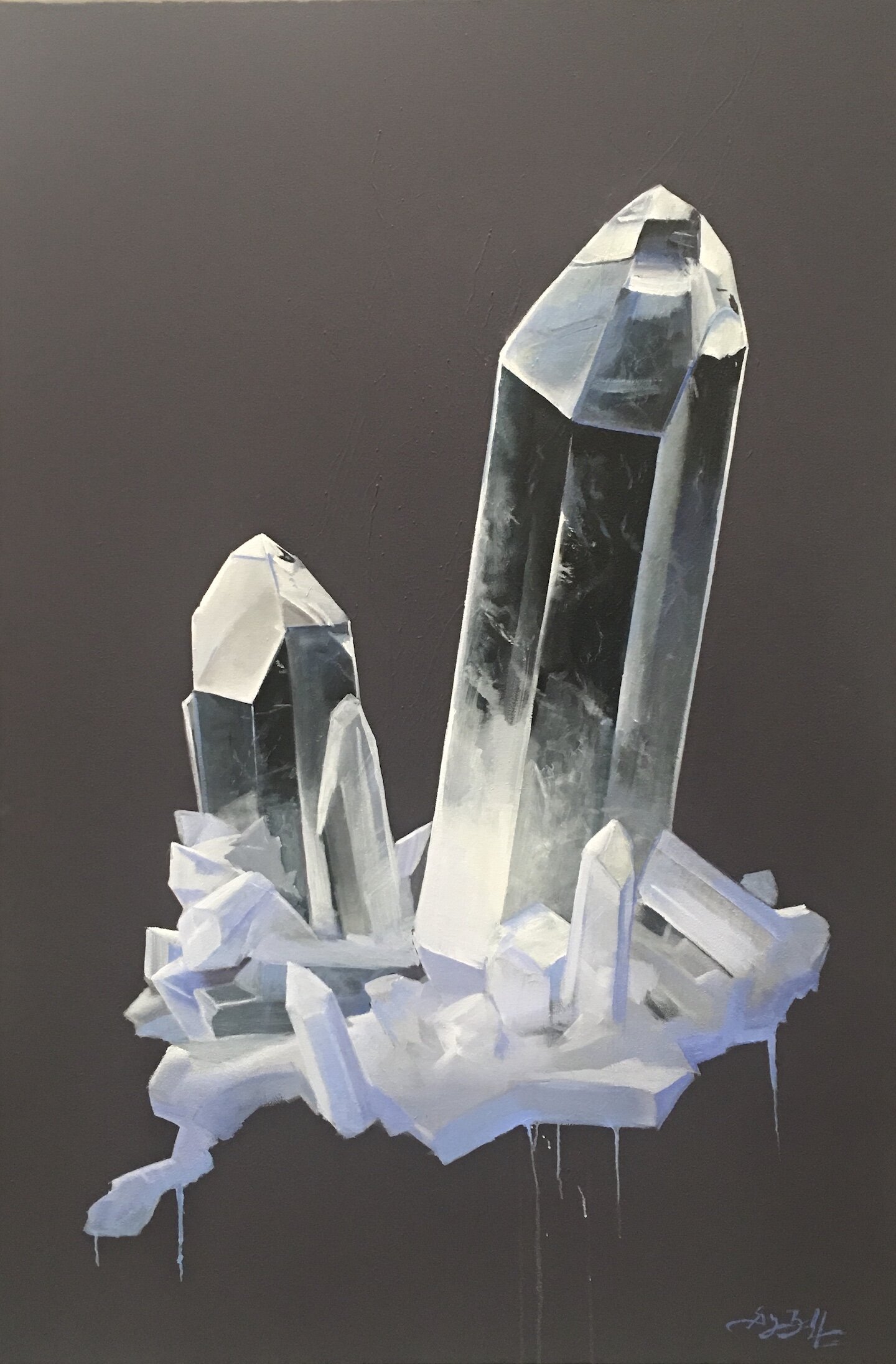
AAS: Are you originally from Arkansas? Where did you grow up?
GB: I was born in Pensacola, Florida, but during grade school my family relocated to Arkansas.
AAS: You’ve said you are a self-taught painter. Is painting something you have always wanted to do?
GB: The answer is “no” strangely enough. Painting did not reveal itself to me as a career option until I was approaching my thirties. I did attend a few of the mandatory college art courses, but I had lost interest after the first semester and did not stay enrolled long after that. I went to work instead of college, and didn’t return until five years later to finish my B.A. The drive to paint presented slowly, as a hobby. I bought a beginners acrylic set and practiced. As I taught myself new skills, art became something of an obsession, and I found myself quitting jobs just to clear my time for painting.
AAS: You were a gallery owner, you are an art broker, a chef, and now Artist-in-Residence for the Paul Michael Company. Talk about those activities.
Guy in his studio.
GB: I’ve lost track of all the different jobs I’ve had over the years. I’m a self-described generalist and that has led me to pursue endeavors like cooking, prosthetics, lighting, and even industrial plumbing. Using my eyes and hands to make things seems to be the common thread linking these. Our culture tends to define individuals by the jobs they perform. I’m not certain that does society a service. Many artist-types and makers I know hold other jobs. I’ve learned a small bit about a multitude of subjects and all serve to complement my main interest of art. Brokerage and gallery ownership allowed me to meet great artists and clients and helped me facilitate art sales for artists I respect.
As for working with Paul Michael, it has been one of the most rewarding experiences in memory. Rarely would I toss around the word “genius”, but if such a term could describe anyone, it would be him. His sculptural work in steel and stone is striking. His furniture is expertly crafted and remarkably well-designed. In working with him I have come to better understand the fundamental elements of what makes a work feel “remarkable” and am trying to experiment with new concepts that incorporate the things I have learned during discussions with him. As Artist-in-Residence, I am encouraged to paint whatever I wish. Working with the Paul Michael Company provides me access to a studio space that dwarfs anything I have had available previously, including the opportunity to turn my attention to sculptural endeavors.
Cain and Abel, 40” x 30”, oil on canvas
AAS: So, in 2014 Cain and Abel was selected by Crystal Bridges to be a part of their “State of the Art: Discovering American Art Now”. That must have been very exciting.
GB: It was an interesting experience completely unexpected at the time. I had been painting professionally for less than two years when the call came and I found myself less than prepared for all of the attention it brought. It was great to meet so many artists each making work informed by their personal experience. The museum personnel and staff were amazing and I am thankful to have experienced it.
Cain and Abel touched on a few different concepts: division in culture, the internal struggle of the individual, ancient folklore in a modern context. Ultimately, my art functions best if viewed like a mirror. It is intentionally left open to interpretation by the viewer to imbue whatever they see within themselves. If one wanted to interpret this image as being about race, class, or conflict, that is the prerogative of the viewer and ultimately reveals what they wish to see rather than what the paintbrush says. That is what makes art so powerful to me. We each experience it in our own unique way.
Those That Came Before, 4’ x 6’, oil on canvas
AAS: I just love Those That Came Before. What inspired you to capture that landscape from that high an angle?
GB: Thanks! I think there is occasion where color and composition within a piece just happen. It feels like your mind tunes in to a divergent reality and the image comes into being as if it has already been made and you are just transcribing it. It comes to be through the artist, not by the artist, if that makes any sense.
Float, 7’ x 4’, oil on canvas
AAS: Your clouds are mesmerizing and calming. Float is just stunning. Is that subject, clouds and sky, something you have always painted? Were you one of those kids who would just lie on their back and stare at the sky?
GB: My family laughs that they took me out of T-ball because I kept getting my nose broken by fly balls while I was staring at the clouds. There is something mesmerizing about them, and I think even their description is nebulous. When you think of a cloud as a singular thing, it really isn’t exactly. it’s a constantly moving and shifting gas that is actually just an expression of the greater atmosphere surrounding the planet. A cloud by itself both exists and it doesn’t exist simultaneously.
Untitled, 30" x 40", oil on canvas
“A cloud by itself both exists and it doesn’t exist simultaneously.”
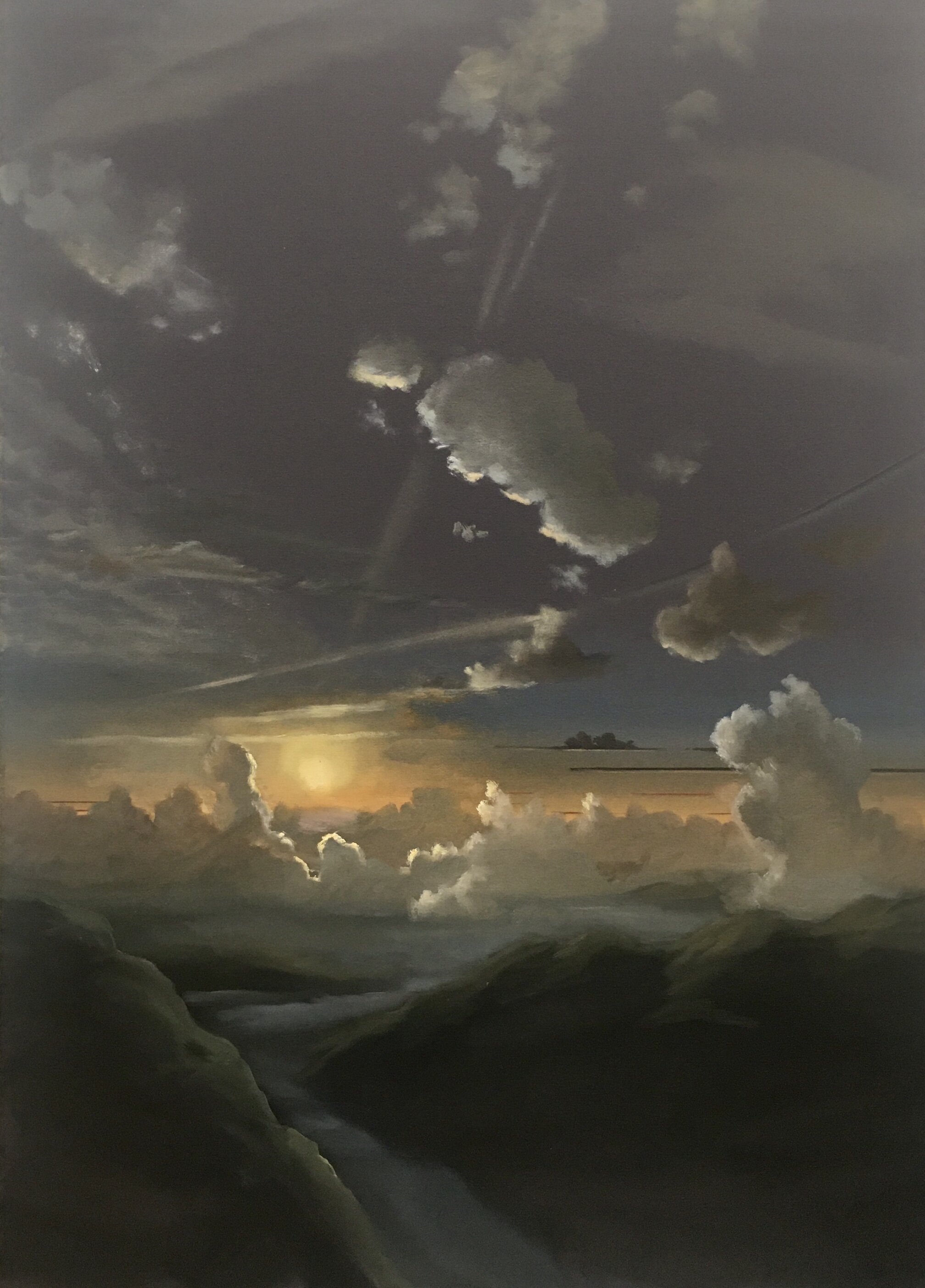
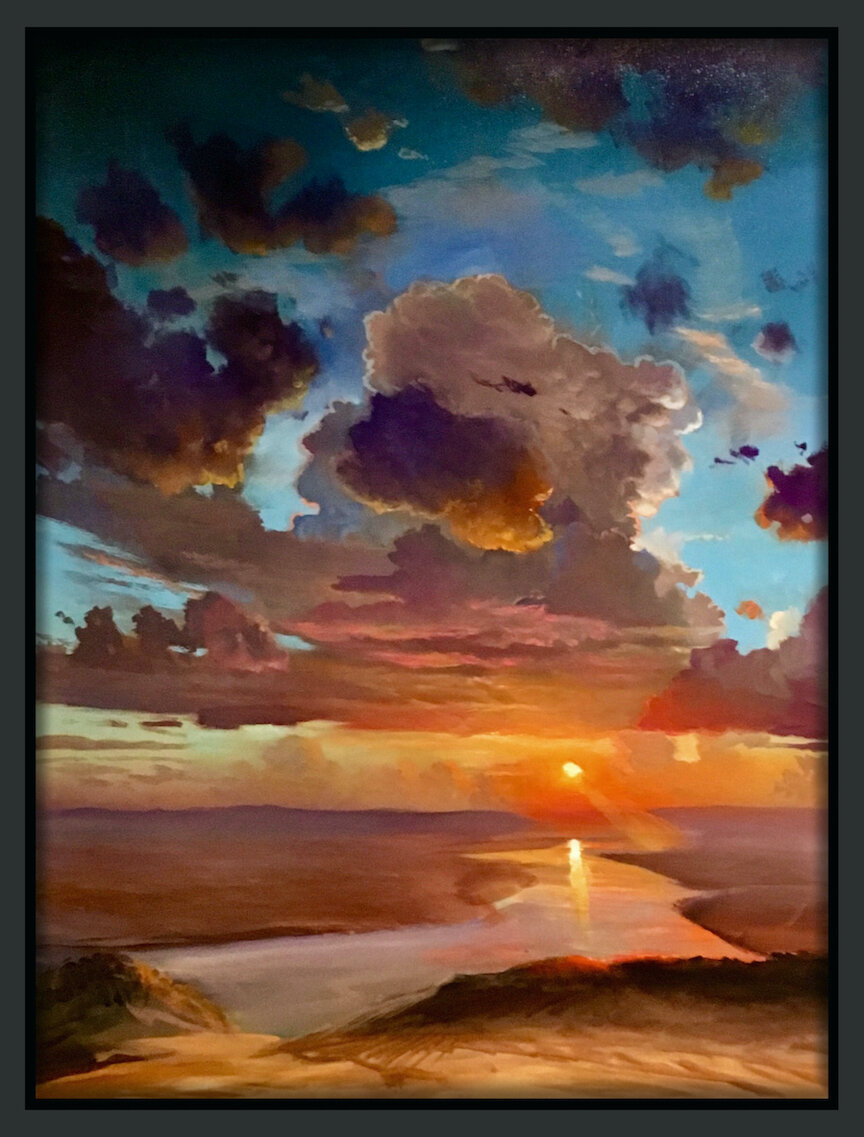
Untitled Cat, 36” x 60” (total) diptych, oil on canvas
AAS: Many of your paintings have a surreal quality. I think the diptych Cat is a good example. Any message in that one or did you just want the viewer’s imagination to run wild?
GB: I think art is interesting when there’s a dissonance of textures and associations. I think of the warmth and soft hair of a cat against the heaviness of cold water provides the opportunity for a sensory experience. There’s something unsettling to this, but at the same time the piece is fairly innocuous. It is something of a thought experiment, really. Can I take the attributes of a hard, horizontal line (the horizon line in the piece) constructed from the negative space between two separate canvases and simultaneously suggest movement within the work using only implied texture without betraying the symmetry of the painting’s scaffolding? I guess that is ultimately up to the viewer, but I like the outcome. It’s just a tiny bit unsettling.
“I think art is interesting when there’s a dissonance of textures and associations.”
AAS: You have done a number of shows over the years. Most recently at the Governor’s Mansion and in Las Vegas. Would you talk about that Las Vegas show?
GB: That was a fun event. I was approached by R Entertainment and USA Today to curate an art show for the Martha Stewart Wine and Food Spectacular at the MGM Grand Las Vegas. We had a 5,000 square feet of space to fill. I phoned some of my favorite artist friends and we put together a show with over 100 pieces. We built the hanging system, hung the work, and then enjoyed a great art party. I slept for two days straight when it was over.

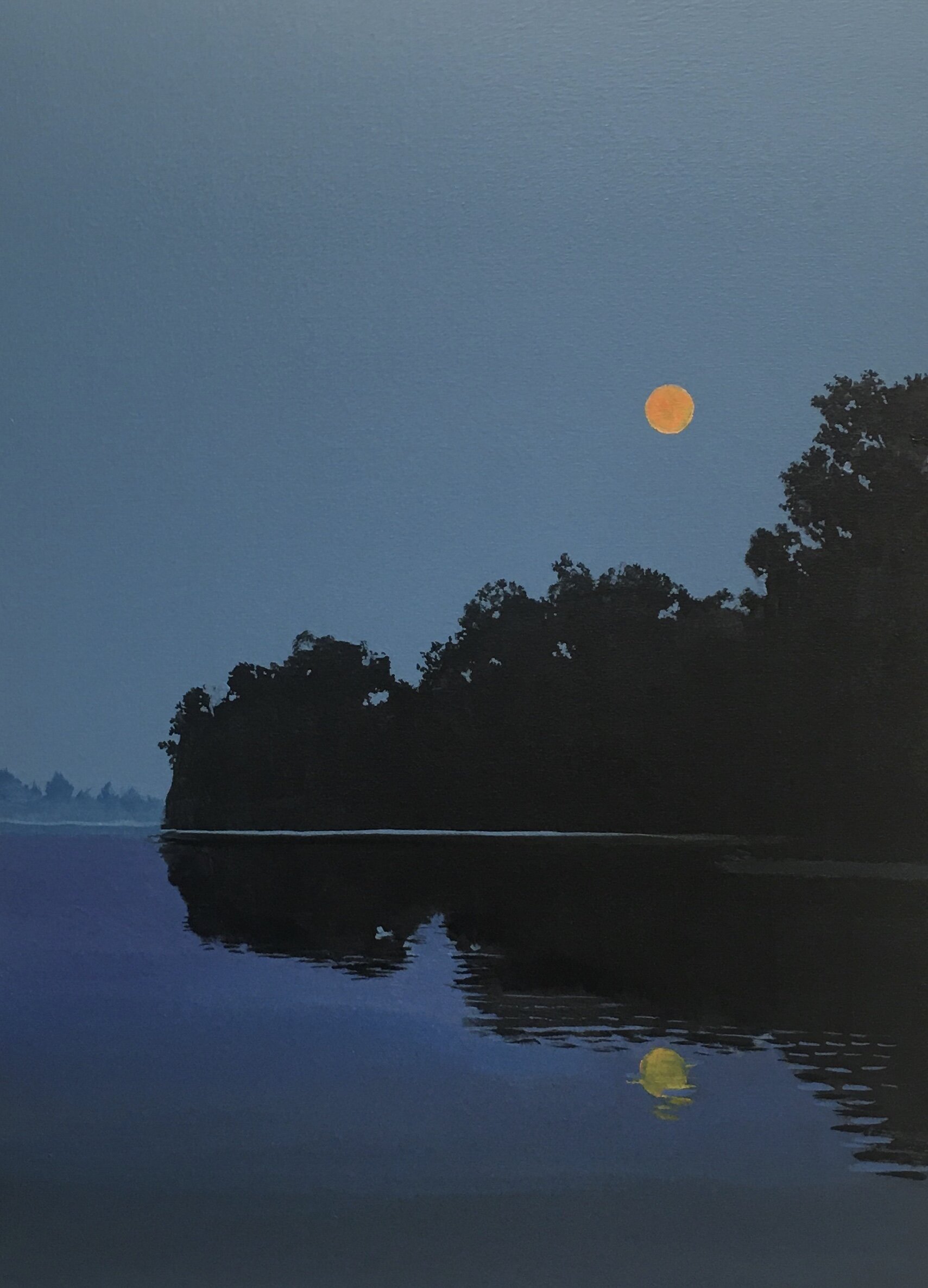
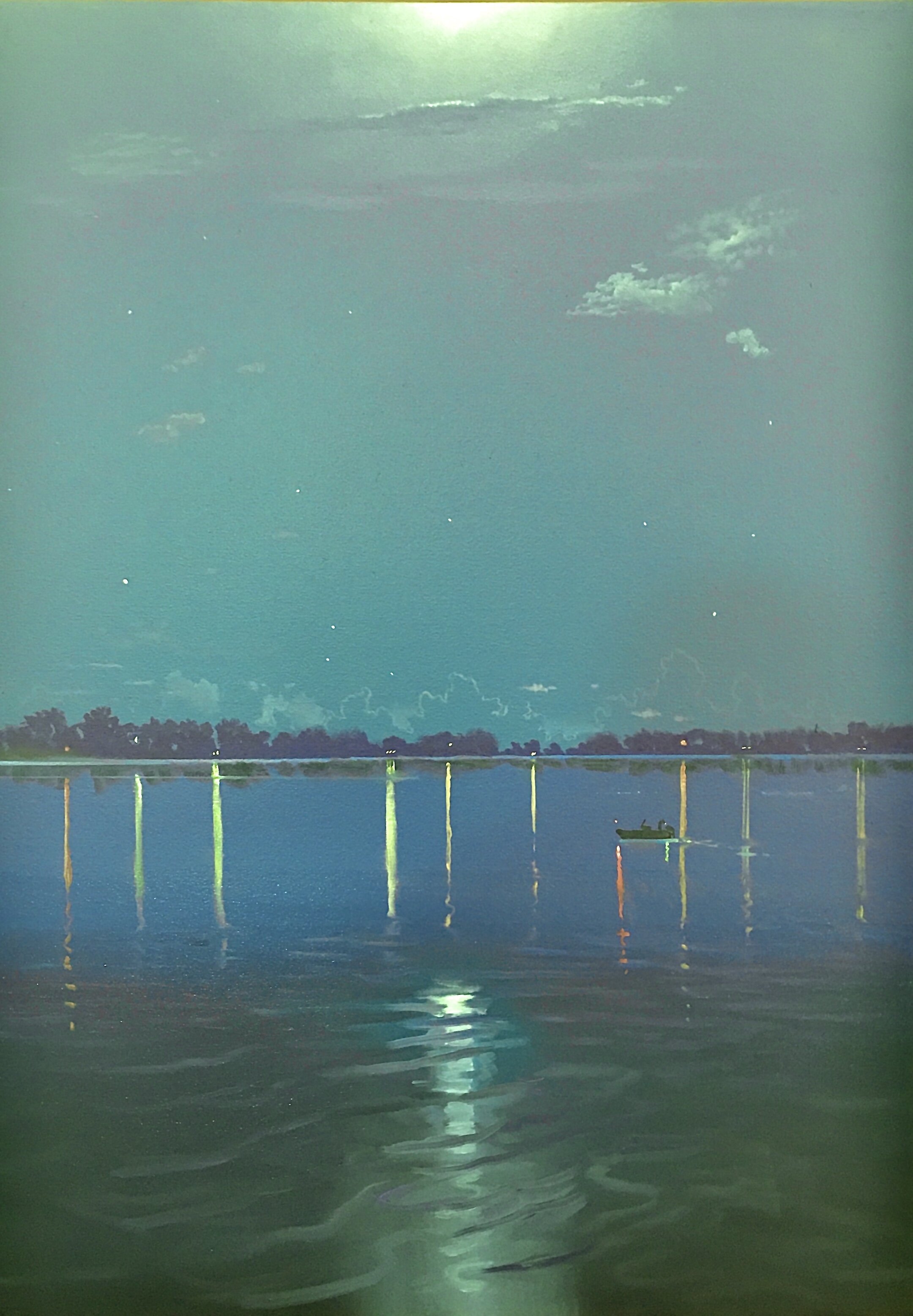
AAS: You have lived and worked both in Little Rock and in Bentonville. What are those art scenes like and how do they differ?
GB: Good question. Post-Covid, much has changed in the way art is viewed and sold. Prior to 2020, I think I could have spoken to that from a more informed perspective. Now, a lot of things are in play that weren’t prior to the pandemic.
For years I have been telling friends that the conventional gallery sales model of moving art was a sinking ship. I think Covid may usher that in a little sooner. It doesn’t make sense for an artist to give up 50% of their sale in tribute for gallery representation, but it is also near impossible for a gallery to pay rent during slow months without high commissions. Innovation in this industry and model is soon to come. If artists can contact and build clients directly, galleries serve little more purpose than used car lots unless they can provide other value. I think the quality of work is starting to increase in both markets due to increased competition and better access to education and supplies. I see changes happening in the Little Rock market, which may provide opportunity for some long overdue shifts in how and where art is made publicly available. The new Arkansas Arts Center can be a major catalyst for change, but in order to do so it will have to do more to incorporate living artists’ work and participation to remain relevant in the shadow of Crystal Bridges Museum of American Art’s significant cultural contributions. I have high hopes they will be successful and I have heard some encouraging rumors to that effect. Bentonville has all of the bones to be the premier destination for art for the region. I think as Northwest Arkansas continues to redefine their own unique regional voice and culture into something as recognizable and hospitable as the museums they host, good things will undoubtedly come.
AAS: What is next for you?
GB: I’m considering creating and displaying some work in Texas, Tennessee, and areas around DC. It could be a fun challenge. I may try to get a few shows lined up there in hopes that public gatherings will be possible in 2021. Arkansas will always be the place I call home, but I’m finding a lot of inspiration in the experiences and people I encounter traveling around the country.


